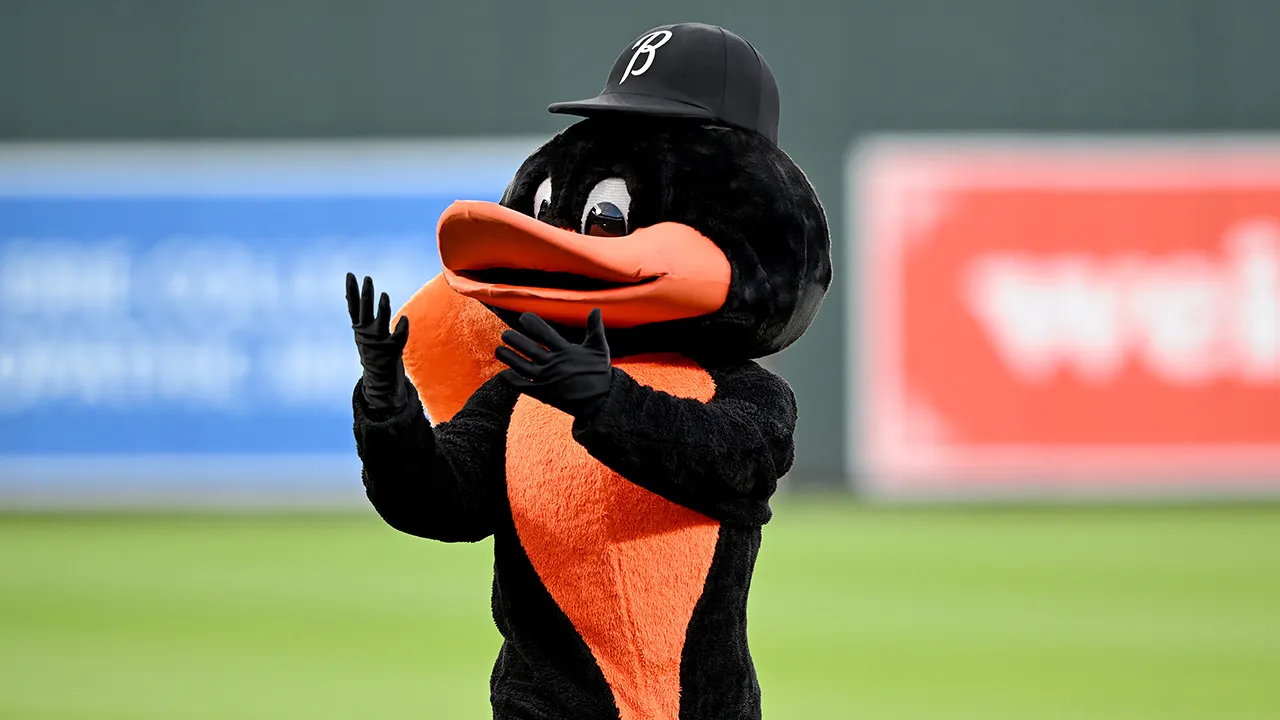The Tragedy of Peter Edward Rose
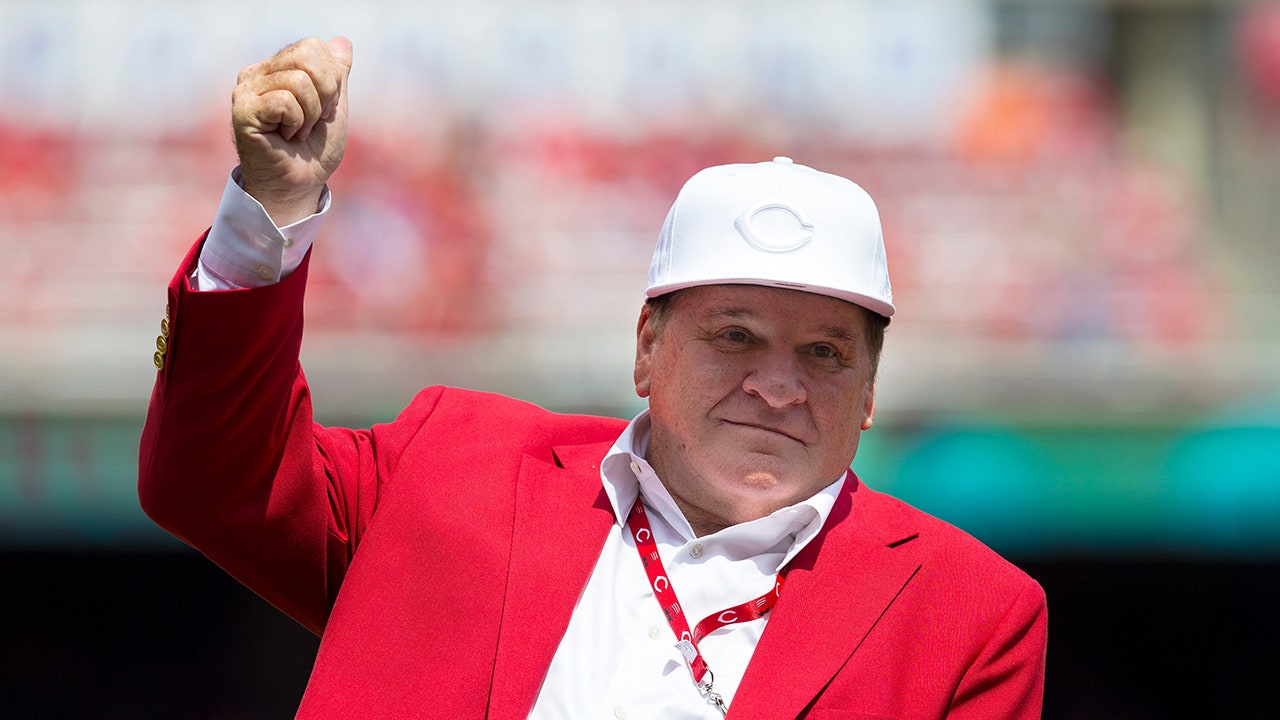
The Major League baseball regular season ended Monday night.
Pete Alonso of the New York Mets grounded out to shortstop in the top of the 9th inning. The Atlanta Braves defeated the Mets 3-0 in the second game of a doubleheader. Thus, ended baseball’s regular season for 2024. Both the Braves and Mets qualified for the postseason, splitting the twin bill. But baseball’s laborious, 162-game schedule was in the books.
The Mets postgame show was still on in my house when I saw the news.
Pete Rose was dead.
PETE ROSE, MLB’S POLARIZING ALL-TIME HITS LEADER, DEAD AT 83
The timing was only fitting. When it came to baseball, Pete Rose was always there for all 162 games.
Pete’s saga serves as bookends to my life. Ever present. Always a part of my youth and early career as a reporter.
After Mr. Rogers and maybe Captain Kangaroo, Pete Rose was my first hero as a kid. As a fan, I watched Pete win two World Series with the Reds, get 3,000 hits, amass a staggering 44-game hitting streak – second only to Joe DiMaggio’s 56 games.
I was crushed when he abandoned Cincinnati for Philadelphia in 1979. But I was ebullient on an August night in 1984 when he triumphantly returned to Cincinnati as player-manager. Pete singled in his first at-bat against the Cubs. His line-drive skipped past Chicago centerfielder Bob Dernier. And Pete, as only Pete would, immediately headed for second. Dernier struggled to track down the errant ball. Pete then took third, flinging himself into third base with a signature head-first slide.
Dirt sprayed everywhere, a cloud slowly drifting up from the green artificial turf like wafts of moisture from dry ice. Then Pete stood. A streak of brown soil from the sliding pit now caked all over the front of his crisp, white uniform.
This was Pete’s way of saying “I’m back.”
I was perched in the Alpine-esque red seats at Riverfront Stadium when he broke Ty Cobb’s all-time hit record. As a rookie reporter a few years later, I covered his altercation with umpire Dave Pallone and subsequent 30-day suspension. In 1989 and 1990, I burned months inside and outside of courthouses in Cincinnati and Columbus, covering gambling allegations. It culminated with Major League Baseball expelling Pete.
IN CONGRESS – LIKE BASEBALL – THERE’S ALWAYS NEXT YEAR
And decades later, I’m still reporting on Pete Rose.
Pete captained the “Big Red Machine,” the legendary Cincinnati Reds squads of the 1970s. Arguably the best baseball team of all time. He hailed from the gritty west side neighborhoods of Cincinnati. Price Hill. Sedamsville. Saylor Park. He grew up in a working-class home wedged onto Cathcart Street, up a steep slope from the Ohio River. A local boy. He played for the hometown team.
And when you say “Pete” in Greater Cincinnati, “Rose” is just superfluous. It’s like saying “Pele” in Brazil. Everyone knows who you’re talking about.

When Major League Baseball conducted its gambling inquiry, Federal District Judge Carl Rubin of Cincinnati took the extraordinary step of publicly lambasting the game for having “a vendetta” against Pete.
People knew about the gambling. The womanizing. Reports of even worse.
But residents of the Republic of Cincinnati see something else in Pete: themselves. They cherished how he played. The way he hustled. The way he won. How he brought championships and excitement to their town.
Cincinnati was the baseball capital of the world.
Pete was more than just the “hit king” of this Midwestern province. He was its king.
Few extracted more from themselves with less to work with than Pete.
LEGENDARY SPORTSCASTER JIM GRAY REMEMBERS MLB GREAT PETE ROSE
Pete wasn’t strapping with muscles. He wasn’t fast. He made throws from third base off his back foot. Nothing was smooth about Pete. He just outplayed everyone else. Played smarter. Willed himself to hit. Willed himself to win. And to compensate for his lack of speed on the basepaths? One commentator once remarked that Pete “ran like a scalded dog.”
With due respect to Noah Lyles, I’ll take Pete as the scalded dog in any footrace. The scalded dog makes up for lack of footspeed with grit.
Pete collected 4,256 career base hits. Only Pete and Ty Cobb achieved 4,000 hits in the history of the game. It’s a big deal for a player to get 200 hits in a season – one of Pete’s annual traditions. Many talented players go an entire career without 200 hits in a year. But here’s what shows how prolific Pete was: If you played for 21 consecutive seasons, getting 200 hits each year, you would still be 56 hits shy of Pete’s mark.
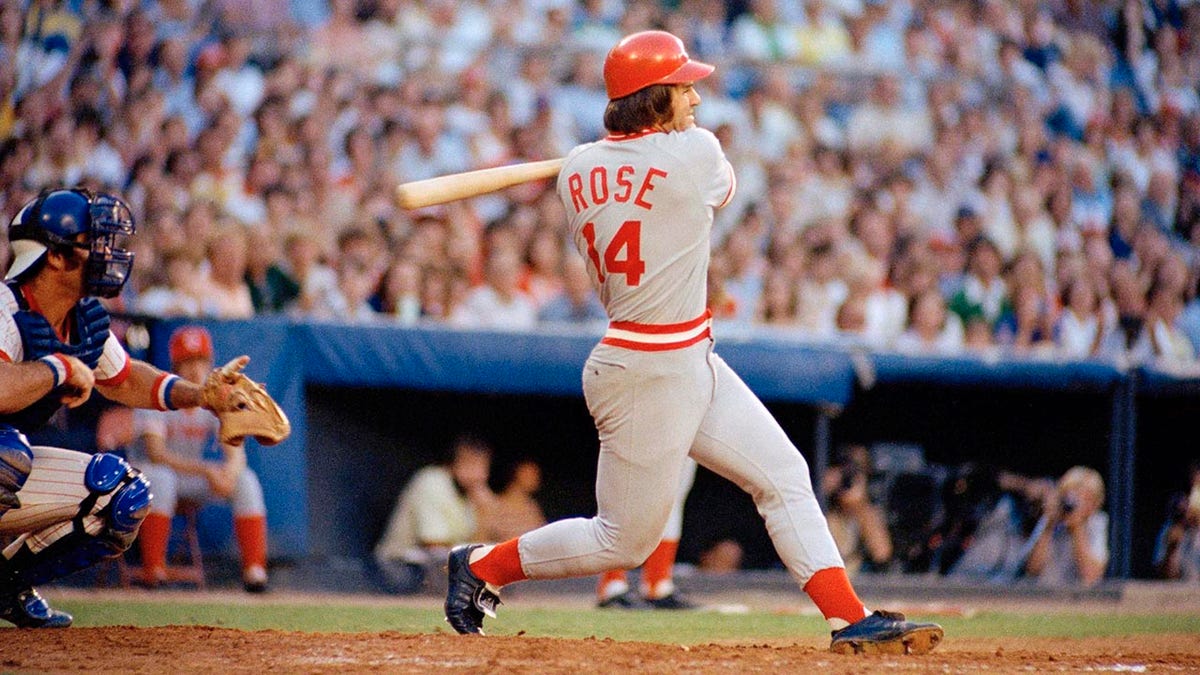
Still, here’s a nugget which is even more ridiculous:
In addition to hits, Pete holds the all-time records in at-bats (14,053) and plate appearances (15,890). Carl Yastrzemski of the Boston Red Sox is second behind Pete in both categories – by nearly 2,000 at-bats and plate appearances.
Pete generated more opportunities.
That’s the story of life. Wayne Gretzky famously said that you miss 100% of the shots you don’t take. But in Pete’s world, if you take more shots…
Of course, Pete isn’t in the Hall of Fame.
Neither are Mark McGwire, Sammy Sosa, Barry Bonds, Rafael Palmeiro, Alex Rodriguez and Roger Clemens. All are associated with baseball’s “steroid era.”
And just like he did that day on Bob Dernier, the only thing Pete ever took was an extra base.
MLB LEGEND PETE ROSE’S CAUSE OF DEATH REVEALED
This is why everyone clamored to see him play.
It was strange luck how I acquired tickets to see Pete break Cobb’s record.
The Cox Farm sits right across the road from the home where I grew up in Jacksonburg, Ohio. It’s the home of James M. Cox. Governor of Ohio. Congressman. Democratic nominee for President in 1920. In July of 1985 the caretaker of the farm, Ralph Schramm, came across the road and offered my Dad 20-plus tickets from Cox Enterprises to a random game in mid-September against the Padres. Schramm wasn’t much of a baseball fan. But he knew we were. Dad took the tickets.
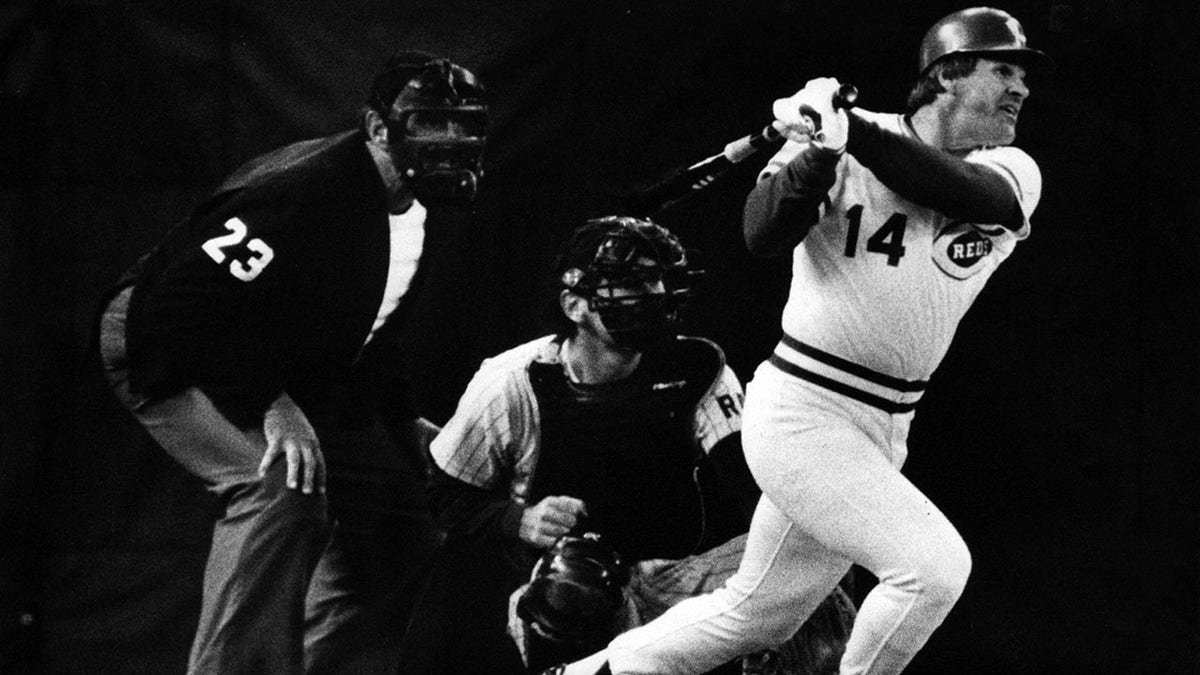
Pete was on the precipice of breaking Cobb’s record by September. He tied the mark in Chicago. Then the club came home to Cincinnati to play the Padres. Pete would likely break the record at home.
I was the goalie for the Edgewood High School soccer team that year. We played a home game against Franklin on the night of September 10. We lost – even though we played better than usual. However, most of the players wanted to get off the field as quickly as possible to find out if Pete surpassed Cobb. I raced to the car and turned on the radio. While driving home, Pete flied out in the bottom of the 8th. The Reds lost 3-2. There was no comeback.
That meant Pete might break the record the next night.
And we had tickets.
PETE ROSE’S DEATH SENDS BASEBALL WORLD INTO MOURNING: ‘ABSOLUTELY HEARTBROKEN’
It was warm on the evening of September 11, 1985. My Dad distributed the tickets to friends and some of the players from the soccer team with whom I was close. The coaches got to go, too. After school, we rushed through practice and raced to downtown Cincinnati.
And in the bottom of the first, Pete knocked a solid single to left field off Eric Show of the Padres.
Hit 4,192 – often pronounced “41-92” in Cincinnati.
We got to see it from the red seats, slightly to right of home plate.

ESPN televised the game. In fact, our group is immortalized on videotape, shown in the stands several times throughout the game.
The Reds shut out San Diego 2-0. Pete scored both runs for the Reds.
By 1989, I was in college at nearby Miami University (OH). I worked as a reporter for WKRC Radio in Cincinnati. Because of my youth, I didn’t often take the lead on our coverage of Pete’s gambling saga. But I was involved. I followed Pete and his attorneys into courthouses. Covered press conferences. Called in reports from phone booths near Fountain Square. Even filed some reports for ABC Radio – which was a big deal for a 20-year-old kid.
PETE ROSE ON MLB BAN FOR GAMBLING IN LAST INTERVIEW: ‘OTHER GUYS WILL KILL SOMEBODY AND BE BACK IN THE GAME’
For 1989, Pete’s banishment from baseball was the story of the year – next to the fall of the Berlin Wall.
Baseball Commissioner Bart Giamatti formally banished Pete from the game on August 24, 1989. I covered the press conference where the Reds promoted Tommy Helms, a former teammate of Pete’s, to succeed him as manager.
Back at WKRC, someone suggested we try to reach Bob Howsam. Howsam was the Reds former General Manager and architect of the “Big Red Machine.” WKRC had three antiquated card-style Rolodexes in the back of the newsroom. I flipped through one them, surprisingly founding Howsam’s number. I was even more surprised when I reached him. And even more stunned when Howsam agreed to do an interview.
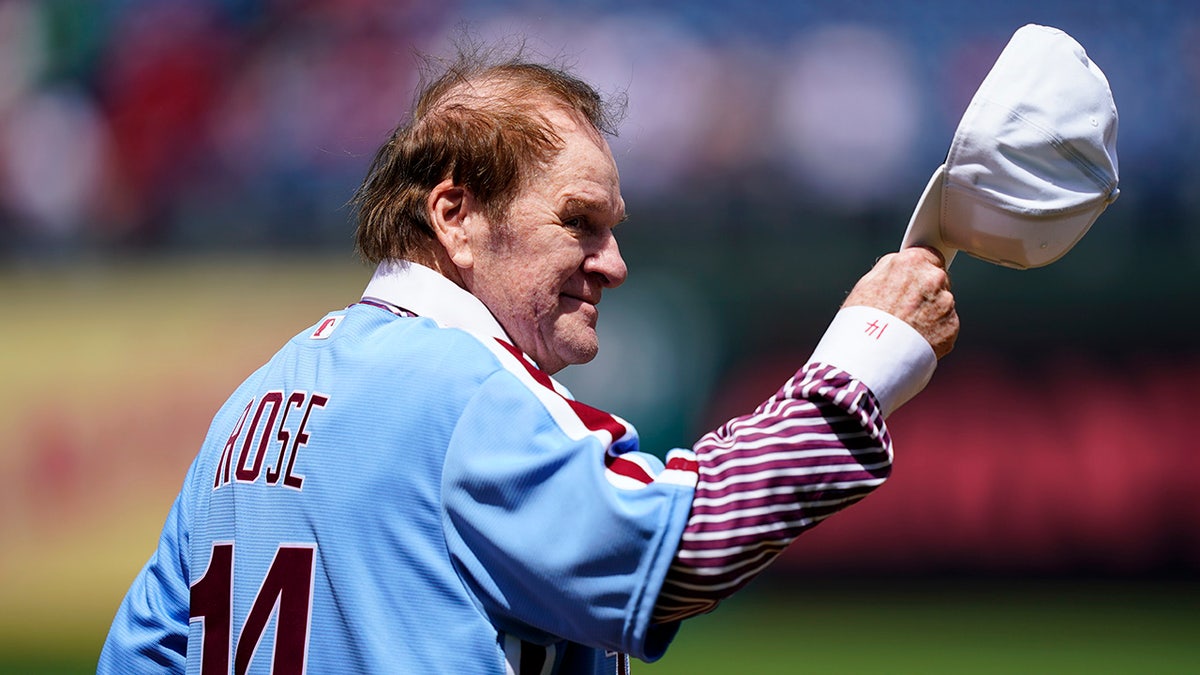
Howsam was straight-laced when he ran the Reds. He didn’t allow players to wear facial hair. He boasted how clean they kept the ballpark. He rewarded young Reds fans with “Straight-A” tickets. If you earned straight A’s in school, you received free tickets.
I never qualified.
In our interview, Howsam conceded his disappointment in Pete. He said Pete violated the cardinal rule of baseball: no betting on the game. Regardless, I asked if Howsam believed Pete should be in the Hall of Fame.
TRUMP CALLS FOR PETE ROSE’S HALL OF FAME INDUCTION: ‘DO IT NOW BEFORE HIS FUNERAL’
His answer has always stuck with me. You could tell that Howsam was struggling with this one. Bob Howsam told me that it diminished the Hall if it failed to include the player with the most-career base hits.
Wow.
On Friday, September 1, 1989, I attended my final class of the week: a late afternoon English class at Miami University’s Middletown Campus. Professor John Heyda handed out a folio for students to read over the weekend and discuss next week. One item caught my eye. Something titled “Green Fields of the Mind.” The author: A. Bartlett Giamatti, Commissioner of Baseball.
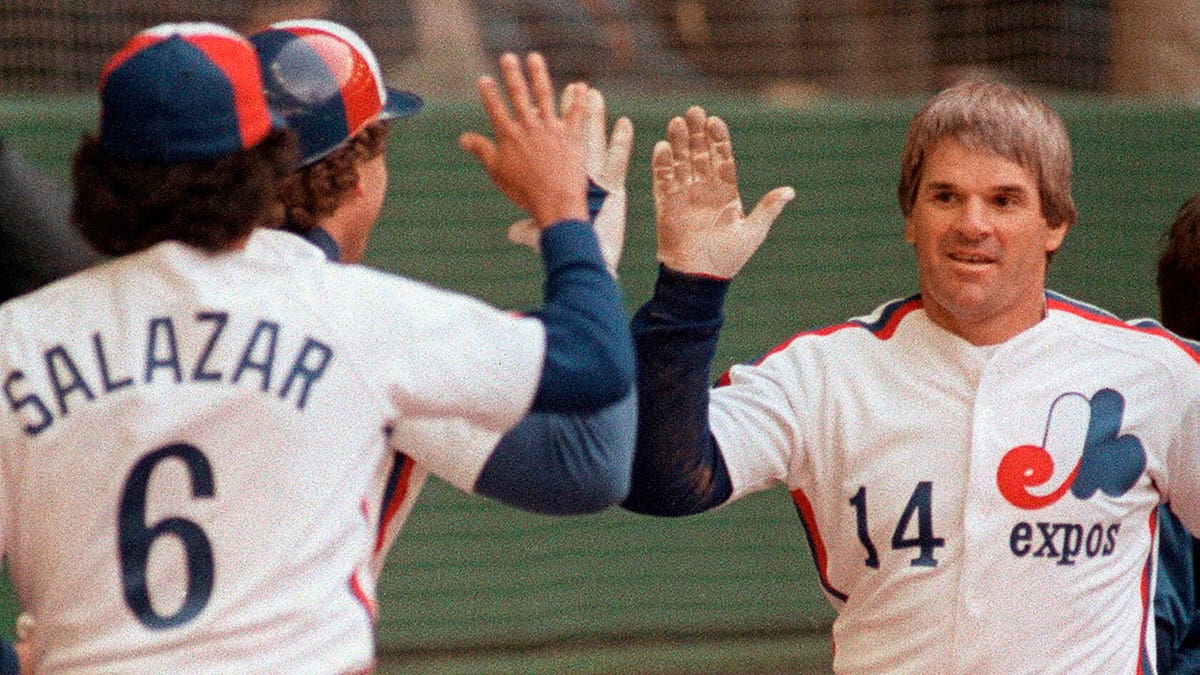
Giamatti was a renaissance man. A student of letters and arts. A partisan of the Boston Red Sox.
Giamatti penned the essay when he was President of Yale in 1977, dismayed at the annual end to the baseball season.
“Today, October 2, a Sunday of rain and broken branches and leaf-clogged drains and slick streets, it stopped, and summer was gone,” wrote Giamatti, sad that his Red Sox failed to make the playoffs.
“It breaks your heart,” Giamatti wrote about baseball. “It is designed to break your heart.”
I crammed the essay into my bookbag and headed to the car. I had to be at WKRC in the Mount Auburn neighborhood of Cincinnati to anchor the late-night, hourly newscasts.
By the time I reached Cincinnati, Bart Giamatti was dead. Felled by a heart attack on Martha’s Vineyard, just days after expelling Pete.
It was Shakespearean.
PETE ROSE SIGNED AUTOGRAPHS, TOOK PHOTO ALONGSIDE REDS LEGENDS ONE DAY BEFORE DEATH
I took my bookbag into the station and unearthed the essay Heyda assigned. I read part of it on the air that night during one of my reports about Giammati’s death.
“The game begins in the spring, when everything else begins again, and it blossoms in the summer, filling the afternoons and evenings, and then as soon as the chill rains come, it stops and leaves you to face the fall alone,” wrote Giamatti.
In 1989, Giammati was dead. Pete was expelled. Summer was ending.
And now, as this baseball season concludes, Pete is gone, too.
Giamatti and baseball got its way, truly sentencing Pete to a lifetime ban.

Like he did often during his career, Pete was there for all 162 games this season. He died right at the end as Alonso grounded out.
This will be the first postseason in decades without Pete, leaving his fans to face the fall alone.
I said this is Shakespearean.
This is the Tragedy of Peter Edward Rose. Exultant highs on the field. Grotesque ravines off it.
It breaks your heart.
It is designed to break your heart.
And it did.



